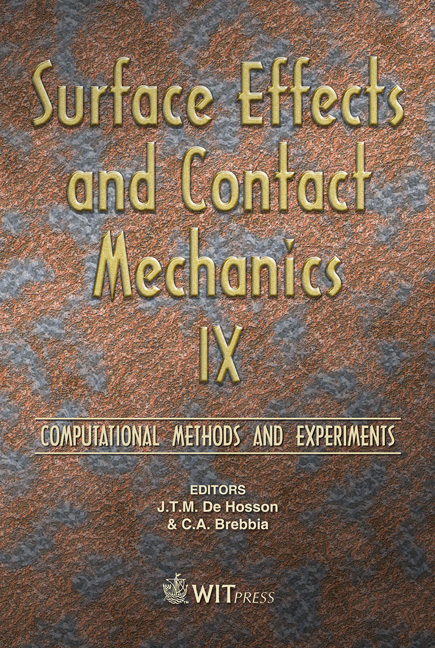Surface Characterization Of Rotary-peeled Eucalyptus Veneers By Confocal Laser Scanning Microscopy And Surface Free Energy And Contact Angle Determination
Price
Free (open access)
Transaction
Volume
62
Pages
10
Page Range
241 - 250
Published
2009
Size
1,033 kb
Paper DOI
10.2495/SECM090221
Copyright
WIT Press
Author(s)
G. Vázquez, J. González-Álvarez, M. S. Freire, J. Santos, R. Uceira & G. Antorrena
Abstract
Eucalyptus wood wettability was studied using aqueous solutions of chestnut shell and eucalyptus bark tannins as potential components of wood adhesives. The behaviour of both sides of rotary-peeled veneers, the tight and the loose sides, was analysed and lower equilibrium contact angles were found on the loose side, reflecting a higher wettability. In order to evaluate if rotary-peeling had provoked any surface modification responsible of the observed wettability behaviour, the free surface energy of the veneer tight and loose sides was determined using the Owens-Wendt and the van Oss-Chaudhury-Good models. The higher surface free energy values for the loose side justified the better wettability previously obtained. Confocal Laser Scanning Microscopy (CLSM) allowed obtaining topographical images of the material surface, without sample damage, and calculating the crack length and depth together with various roughness parameters. Significant differences between both sides of the veneers have not been found but CLSM has turned out to be a high resolution technique for material surface characterization. Keywords: eucalyptus wood, rotary-peeled veneer, chestnut shell extract, eucalyptus bark extract, wettability, contact angle, surface free energy, confocal laser scanning microscopy.
Keywords
eucalyptus wood, rotary-peeled veneer, chestnut shell extract, eucalyptus bark extract, wettability, contact angle, surface free energy, confocal laser scanning microscopy





